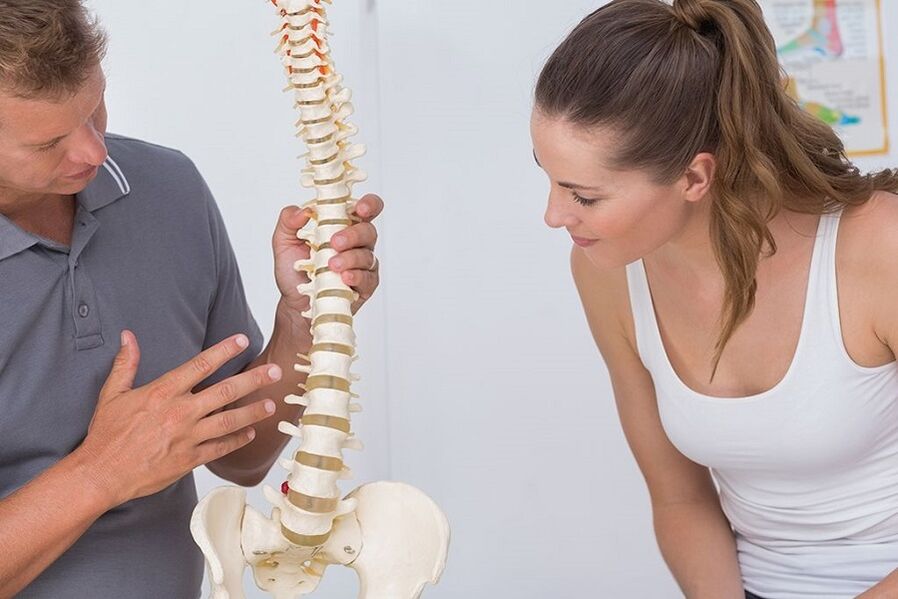According to medical statistics, cervical osteochondrosis is a fairly common disease in recent years. Every person has experienced its unpleasant symptoms at least once in their life.

The disease itself is a malfunction of the intervertebral discs of the cervix. After all, the maximum constant load on this part of the human spine occurs.
The cervical region consists of 7 discs. Due to its weak muscles and constant load on them, various injuries and work disruptions can occur. Because of all these factors, cervical osteochondrosis begins to develop.
Types of disease
Osteochondrosis is an insidious disease that may not be detected for a long time. There are several stages in the development of this disease:
- Cervical osteochondrosis grade 1 (manifested by initial disorders of the spine);
- Grade 2 cervical osteochondrosis (distance between cervical spine discs begins to decrease);
- Grade 3 cervical osteochondrosis (complete destruction of the intervertebral disc and severe deformity of the entire spine begins);
- Grade 4 cervical osteochondrosis (the last stage of disease progression that can lead to disability).
Causes of disease onset and development
Like any other disease, cervical osteochondrosis has its causes and developmental factors. A few decades ago, only the elderly were susceptible to this disease. Also, osteochondrosis of the neck has struck men after the age of 40 who are engaged in heavy physical labor.
Osteochondrosis of the neck is becoming more and more common today and affects young people over the age of 20. There are many reasons for the development of diseases of the cervix and thoracic spine:
- Existing excess weight;
- Improper posture and, as a result, curvature of the spine by 1 or 2 degrees;
- Heavy physical labor or professional sports, resulting in various spinal injuries;
- Causes of stress and strong emotional stress;
- Weak muscles of the cervix;
- Abrupt cessation of sports after prolonged exercise;
- Working is related to sitting at a computer or staying in one position for a long time.
If you find yourself for the reasons listed, then you e. წ. In this case it is necessary to avoid osteochondrosis of the cervical spine.

Manifestation of the disease
With grade 1 osteochondrosis, a person has virtually no symptoms of developing disease. Only the initial contraction of the neck muscles begins.
Grade 2 cervical spine osteochondrosis usually manifests as minor pain that can occur in the cervical and thoracic segments. This occurs due to the compression of the nerve endings due to the reduction of the distance between the spinal discs.
Grade 3 and 4 of the disease can not go unnoticed. In this case, the deformity of the spine will be noticeable to the naked eye, not to mention the sensations a person is experiencing.
The main and more common symptoms of this disease include:
- Strong persistent headache;
- Call back;
- Movement and coordination disorders;
- Deterioration of eyesight and dental health;
- Cerebrovascular accident, insomnia and various neurological problems.
Pain at 1, 2, 3 or 4 degrees of the disease can spread to the shoulder joint and arm area. A characteristic of this symptom, which distinguishes it from other diseases, is that the discomfort changes its strength and concentration according to the position of the neck and head.
Disease syndromes
All the symptoms identified during osteochondrosis can be misdiagnosed and, as a result, misdiagnosis is possible. That is why, with the existing symptoms, it is necessary to find out all the reasons for their appearance. Thus, medicine knows several syndromes that differentiate the causes of their origin:
Radical syndromes
In this case the nerves break down and the person feels pain and numbness in one part of the neck. Unpleasant sensations may spread to the back, scapula area, as well as the arm;
Irritable reflex syndromes
Manifested by severe, unbearable pain in the head that extends to the entire neck. Most often this happens with its sharp movement or rotation;
Spinal artery syndrome
In this case, the name speaks for itself. There is a narrowing of the artery and the person feels a strong excruciating headache, which can lead to loss of consciousness or vomiting;
Heart syndrome
Manifested by increased heart rate, dizziness and loss of consciousness. Quite often, in this case, a misdiagnosis occurs and treatment of angina begins.

Treatment
With osteochondrosis, a person is always shown to be treated immediately. His tactics are selected according to the degree of the disease. So at 1 or 2 degrees, complete recovery is possible after therapy. In later stages, medical correction is usually aimed at preventing complications as well as improving the quality of life.
First aid
What to do when the first symptoms of the disease appear? First you need to relieve the pain from the cervical region. To do this, you need to take a regular painkiller, start or just relax.
The next step is to visit a doctor for a correct diagnosis and appropriate treatment.
Conservative treatment
With confirmation of osteochondrosis, conservative treatment is usually prescribed. Shown to a patient taking anti-inflammatory, analgesic drugs. It is possible to use different gels or ointments to relieve swelling and inflammation. Also, the doctor may prescribe a course of massage, therapeutic exercises. Physiotherapy for cervical osteochondrosis is prescribed in almost all cases.
Surgery
In rare cases, with severely advanced osteochondrosis, surgery may be performed. In this case, the patient falls asleep with the help of general anesthesia, after which bone formations are removed between the cervical spine discs. After the manipulation, the patient undergoes further conservative treatment or physiotherapy.
Preventive measures
Due to the reduction in the age of onset of cervical osteochondrosis, it is essential that each person carry out its prevention. This is especially true for people who are at risk.
Important rules
Prevention of cervical osteochondrosis includes the following simple but very important rules:
- Watch your posture, do not allow it to close;
- Do not expose the spine to heavy loads;
- You can not make his sudden movements;
- Do not worry, avoid stress;
- Do not be cold, do not be cold;
- Get rid of bad habits, go for proper nutrition.
Special exercises
To protect yourself from such a disease, you need to perform preventive exercises:
- Place the palm on the forehead, tighten the neck muscles, then move the hand to the back of the head and repeat the exercise, you should do 7 seconds in 3 sets;
- Place the palm in the temple, then also tighten the neck muscles, repeat the same action on the other hand, time, the number of approaches is the same as in the first paragraph;
- Lift your head back, then slowly reach the chin to the chest, do the exercise 3 times;
- Turn your head in different directions - you should perform this exercise slowly, without sudden movements;
- Bend your head back, first touch one ear to one shoulder, then the other, repeat the exercise 5 times.
If one or more symptoms of the disease appear, consult a doctor immediately. Perhaps you will only be prescribed physiotherapy and that will be the end of it. Do not delay, do not start the disease.
Do daily gymnastics. It is better to do elementary exercises than later due to illness.
Ask your doctor how to sleep with cervical osteochondrosis. Follow all the rules, stay healthy!

















































